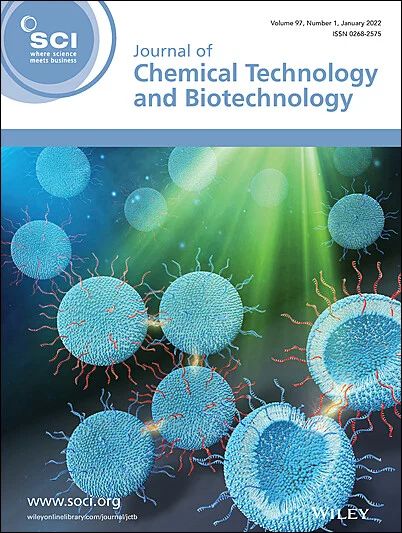Highly loaded copper on mesoporous silica as catalysts for acetaldehyde production from ethanol: their synthesis, characteristics, and catalytic properties
Abstract
BACKGROUND
The present study investigates copper (Cu)/mesoporous catalysts supported on mesocellular foam silica (MCF-Si) and Santa Barbara Amorphous-15 (SBA-15) for ethanol dehydrogenation, focusing on catalyst synthesis, performance, and stability. Cu catalysts were impregnated on the MCF-Si and SBA-15 supports with different pore morphologies – spherical and hexagonal structure, respectively – using the wetness impregnation method and incipient wetness impregnation (IW), with a Cu loading of 60 wt%. The synthesized catalysts underwent physical and chemical characterization via scanning electron microscopy combined with energy-dispersive X-ray spectroscopy, X-ray fluorescence, X-ray diffraction (XRD), transmission electron microscopy, N2 physisorption, X-ray photoelectron spectroscopy, thermogravimetric analysis (TGA), carbon monoxide chemisorption, hydrogen temperature-programmed reduction (H2 TPR), ammonia temperature-programmed desorption, and carbon dioxide temperature-programmed desorption.
RESULTS
It was observed that copper impregnation of the support in either method did not alter the structural characteristics. Incipient wetness resulted in superior catalytic activity, particularly with Cu/MCF-Si (IW), having pure ethanol conversion of 99.4% and acetaldehyde yield of 95.7%, attributed to effective Cu dispersion and a lower reduction temperature. Further investigation of time-on-stream (TOS) behavior revealed sustained ethanol conversion rates exceeding 95% with a 10% ethanol feed. However, catalyst deactivation due to coke formation occurred with 100% ethanol, highlighting the importance of understanding catalyst stability and deactivation mechanisms.
CONCLUSION
Incipient wetness resulted in superior performance compared to wetness impregnation, with Cu/MCF-Si (IW) achieving exceptional ethanol conversion rates due to effective Cu dispersion and a lower reduction temperature. TOS testing revealed sustained ethanol conversion; however, catalyst deactivation was observed with pure ethanol feed due to carbon deposition (coke formation). Characterization techniques, including XRD, TGA, and H2 TPR analyses, provided valuable insights into the deactivation processes, highlighting the need for strategies to mitigate oxidation-induced deactivation. © 2025 Society of Chemical Industry (SCI).

 求助内容:
求助内容: 应助结果提醒方式:
应助结果提醒方式:


